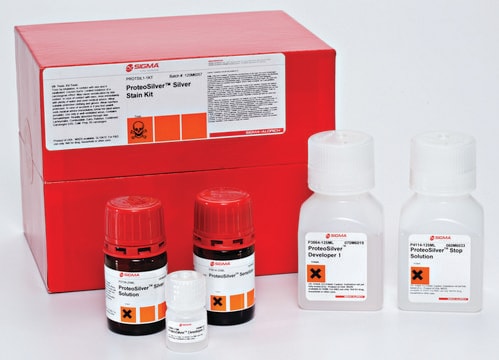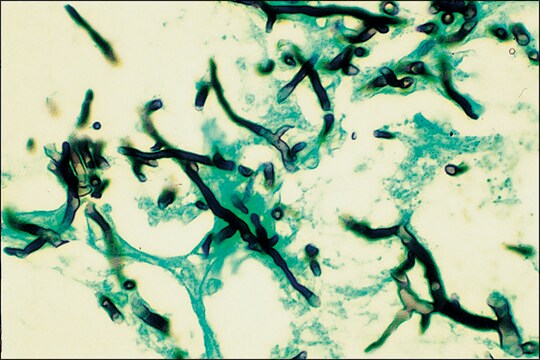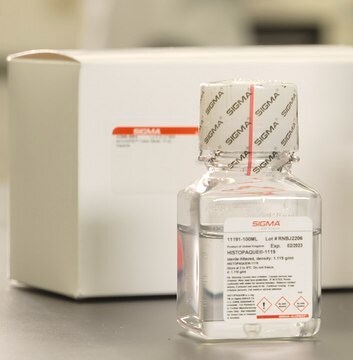SE100
Silver Enhancer Kit
About This Item
Produits recommandés
Forme
liquid
Niveau de qualité
Utilisation
sufficient for ≥100 slides staining and fixing
dilution
(for the determine the presence of gold nanorods in various tissues)
Application(s)
diagnostic assay manufacturing
hematology
histology
Température de stockage
2-8°C
Application
Caractéristiques et avantages
Conditionnement
Principe
Composants de kit seuls
- Sodium thiosulfate pentahydrate, reagent grade, ≥99.5% 500 g
Mention d'avertissement
Danger
Mentions de danger
Conseils de prudence
Classification des risques
Aquatic Acute 1 - Aquatic Chronic 1 - Repr. 1B
Code de la classe de stockage
6.1C - Combustible acute toxic Cat.3 / toxic compounds or compounds which causing chronic effects
Point d'éclair (°F)
Not applicable
Point d'éclair (°C)
Not applicable
Faites votre choix parmi les versions les plus récentes :
Déjà en possession de ce produit ?
Retrouvez la documentation relative aux produits que vous avez récemment achetés dans la Bibliothèque de documents.
for the Observation of Focal Adhesion-substratum
interactions at the Nano- and Microscale in S-Phase Cells
Notre équipe de scientifiques dispose d'une expérience dans tous les secteurs de la recherche, notamment en sciences de la vie, science des matériaux, synthèse chimique, chromatographie, analyse et dans de nombreux autres domaines..
Contacter notre Service technique










